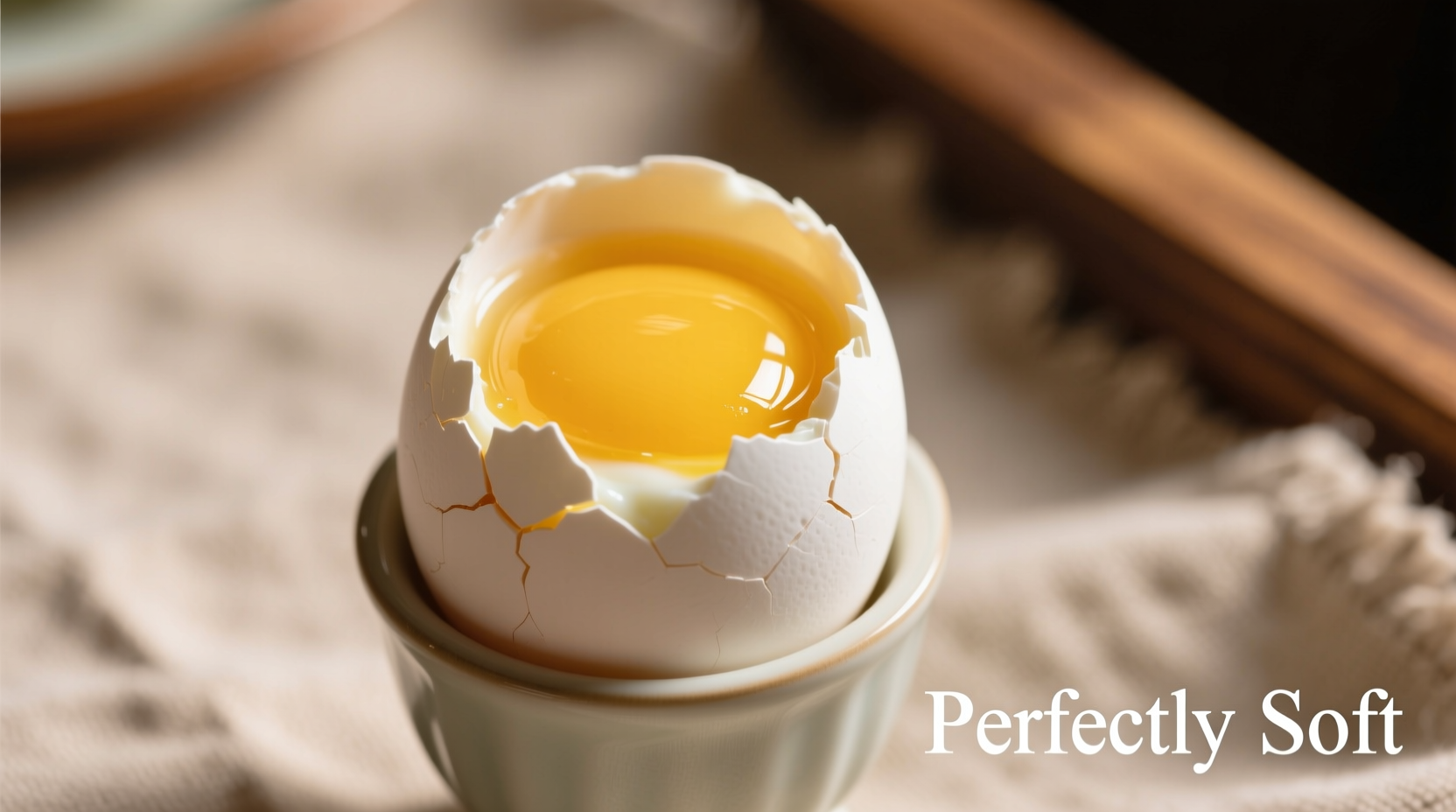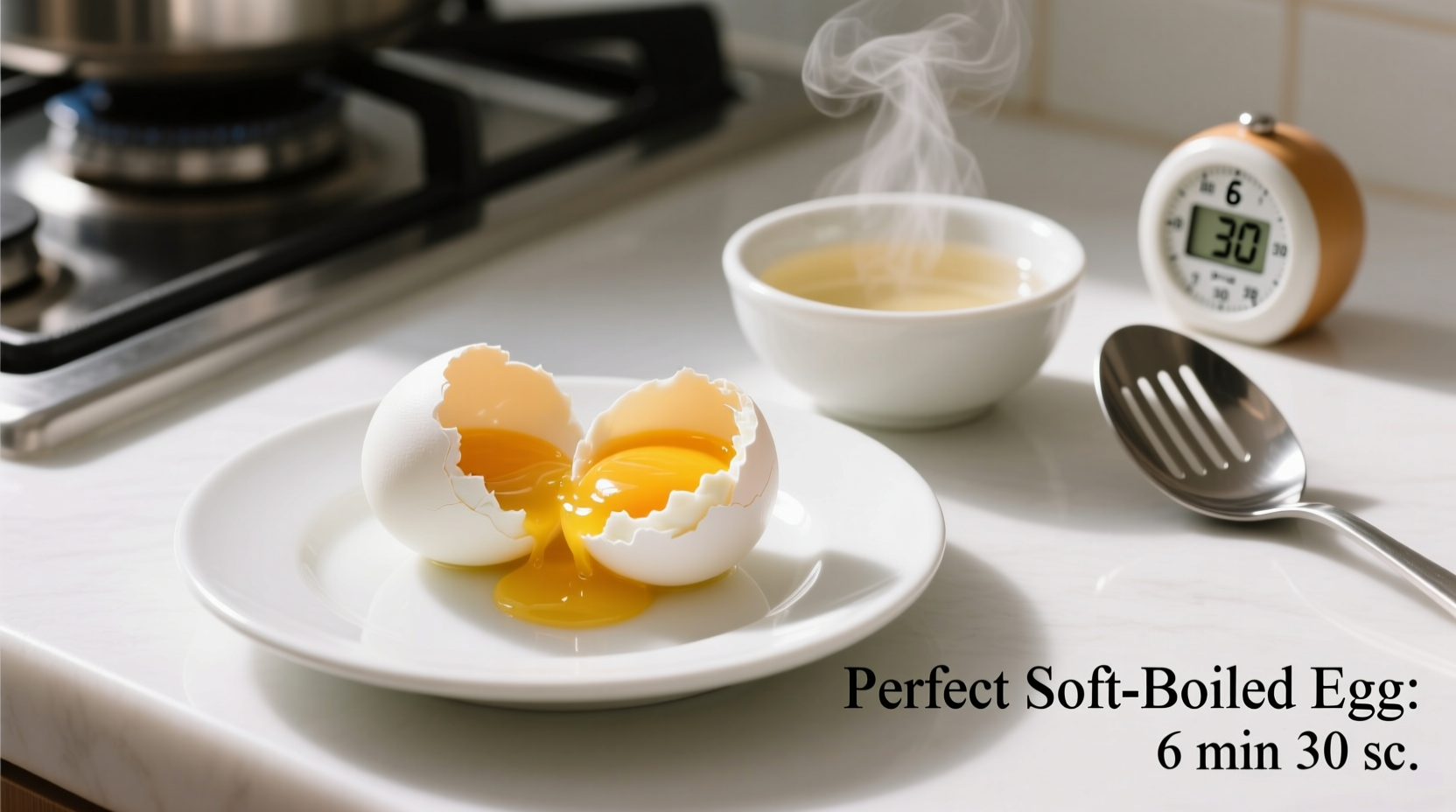Perfect soft boiled eggs require 4 minutes in boiling water for large room-temperature eggs, yielding a fully set white with a creamy, runny yolk. This precise timing—validated by culinary science—creates the ideal texture for dishes like ramen, avocado toast, or solo enjoyment with sea salt and pepper.
The Science Behind Perfect Soft Boiled Eggs
Egg proteins transform at specific temperatures—a critical factor often overlooked in soft boiled egg recipes. According to research from the USDA Agricultural Research Service, egg white proteins begin coagulating at 140°F (60°C), while yolk proteins set between 149-158°F (65-70°C). This narrow temperature window explains why timing precision matters more than many home cooks realize.
Our recommended 4-minute method works because it leverages residual heat: after removing eggs from boiling water, the internal temperature continues rising by 5-8°F during the ice bath transition, completing the perfect set without overcooking.
Essential Equipment Checklist
Forget complicated gadgets—these three items guarantee success:
- Medium saucepan with lid (3-quart minimum)
- Slotted spoon for gentle handling
- Timer (phone timers often lack precision for this critical 4-minute window)
| Egg Characteristic | Impact on Cooking | Solution |
|---|---|---|
| Freshness (7-10 days) | Harder to peel due to lower pH | Use eggs 10-14 days old for easiest peeling |
| Room temperature | Prevents shell cracking | Leave on counter 30 minutes before cooking |
| Large size (standard) | Affects heat penetration rate | Add 30 seconds for extra-large, subtract 30 for medium |
Step-by-Step Cooking Process
Step 1: Egg Preparation
Remove eggs from refrigerator 30 minutes before cooking. This prevents thermal shock that causes cracking. While waiting, fill your saucepan with 4 inches of water and add 1 teaspoon salt (raises boiling point slightly for more controlled cooking).
Step 2: Water Temperature Control
Bring water to a rolling boil, then reduce to a gentle simmer (small bubbles rising steadily). Contrary to popular belief, eggs should not be added to full rolling boil—this causes violent movement that damages shells.
Step 3: The Critical Timing Phase
Using a spoon, carefully lower room-temperature eggs into simmering water. Start timer immediately for exactly 4 minutes. During this phase:
- 0-60 seconds: Egg white begins setting at contact points
- 60-180 seconds: White fully coagulates while yolk remains liquid
- 180-240 seconds: Yolk reaches ideal creamy consistency
Step 4: The Ice Bath Stop
Prepare a bowl with equal parts ice and water. At exactly 4 minutes, transfer eggs immediately to ice bath for 2 minutes. This rapid cooling:
- Stops residual cooking
- Creates slight contraction between membrane and shell for easier peeling
- Prevents green sulfur ring around yolk

Troubleshooting Common Problems
Problem: Cracked shells during cooking
Solution: Always use room-temperature eggs and add vinegar (1 tbsp per quart) to water. The vinegar helps coagulate proteins instantly if cracks occur, preventing white leakage.
Problem: Difficult peeling
Solution: As noted in University of Minnesota Extension research, older eggs peel more easily because their higher pH reduces membrane adhesion. For immediate use, add 1/2 teaspoon baking soda to cooking water to increase pH.
Problem: Overcooked or undercooked results
Solution: Altitude affects boiling point—decrease time by 15 seconds for every 1,000 feet above sea level. Use a thermometer to verify water temperature (208°F/98°C at sea level).
Serving Like a Professional
Chefs at top restaurants follow these presentation techniques:
- Use an egg cup to stabilize while cutting the top
- Make initial cut with a sharp knife, then finish with egg spoon
- Serve with Maldon sea salt flakes and freshly cracked pepper
- Pair with buttered toast soldiers for traditional dipping
For modern presentations, try placing soft boiled eggs atop ramen, grain bowls, or avocado toast. The runny yolk creates an instant sauce that elevates simple dishes.
Advanced Variations
Tea-Infused Eggs: Add 2 black tea bags to cooking water for subtle tannin flavor and golden hue.
Spiced Broth Poaching: Replace water with dashi or chicken broth (simmered with star anise and ginger) for umami-rich eggs ideal for Asian dishes.
Low-Temperature Precision: For absolute consistency, use a sous vide at 147°F (64°C) for 45 minutes—ideal for dinner parties where timing must be perfect.











 浙公网安备
33010002000092号
浙公网安备
33010002000092号 浙B2-20120091-4
浙B2-20120091-4